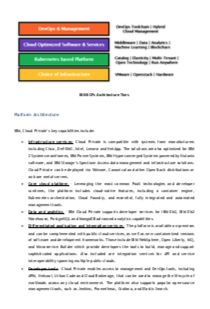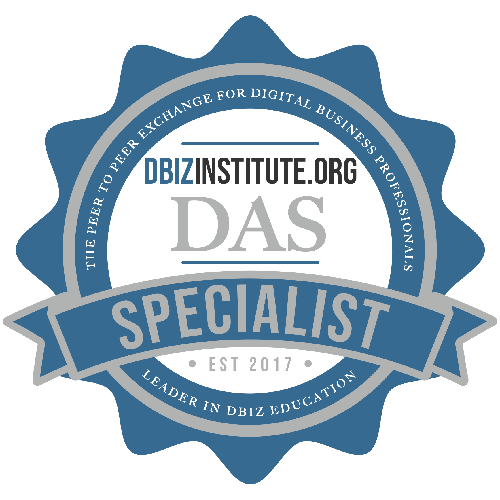Home / Resources
Resources
Discover a Wealth of BPM Knowledge and Expertise at BPMInstitute.org!

Top 5 Digital Trends for 2019
2019 is going to be a very different year than the past few years. 2017 was a “pedal to the metal” year where almost all were making forward momentum with digital. 2018 started strong, but there was a shift to “steady speed” over acceleration. Many economic experts are now predicting a slight dip in growth which means businesses will be hovering their foot above the brake pedal just in case the turmoil in the markets takes a sharp turn. What does this mean for business investment in Digital? This blog will be my best shot at predicting the likely trends.

IBM Cloud Private: A Private Cloud Story

Future-Proofing: 3 Methods for Creating Business Value
In a previous article, Using Business Architecture to Design Future Industries, I made the case that Business Architects have an important role to play in identifying future-oriented business opportunities in emerging business sectors such as the $350B space industry. The example provided was that of a key business process – the space supply chain management process – which is already being defined and modeled by several organizations. While the space industry and its key sector – space transportation – are still in their infancy, industry players with the foresight to map out the long-term business and IT architecture for the space transportation infrastructure will have first-entrant advantage into what is expected to be a highly lucrative field.

Where to Start with Process Improvement in a New Organization
Most of us have found ourselves in the situation where we are assigned to oversee a function or department new to us. Without knowing what we’ve inherited, the honeymoon period kicks off – those critical ninety or so days where we have to demonstrate that the hiring manager made the right decision. During this time, we meet with our direct reports, talk with customers, watch how things are getting done, and diligently investigate areas identified by our boss. But true progress is somewhat elusive – we just don’t really know where to dig in. Not knowing where to focus their energy, many new managers hammer down on the administrative side of the job. Unfortunately, they quickly lose the ability to see with fresh eyes the reality of the situation. They get sucked into the void of the status quo.

5S-Work Flow Management in Enterprise Excellence Deployment
As Part of a Business Transformation and Enterprise Excellence strategy, how can the methodologies & tools of Operational Excellence be integrated into Business Strategy?

The Role of Operations in Strategy
I recently enjoyed an article by Kevin Laczkowski and colleagues at McKinsey titled: Seeing your way to better strategy. It argued for four lenses to help you “see your way” forward – Financial, Market, Competitor and Operating Model. The thought behind these lenses is that, by doing some focused thinking around each lens, you will develop better strategy.

Robotic Process Automation within your Organization
Whether you are into BPM on a full-time basis or a general technologist, it is hard to not be seriously considering RPA or RDA (Robotic Desktop Automation) in the mix of any business solution you are working on lately. For Pegasystems specialist, you may have been introduced to RPA by their fairly recent acquisition of OpenSpan (now Pega Robotics). Pegasystems is rapidly assimilating the RPA into their BPM platform (PRPC 7.4). Although, integration with BPM is a good feature, in the industry RPA is platform agnostic and considered a platform in and of itself.
I have seen some organizations establish entire reporting units dedicated to RPA, even with a well-established BPM practice already in place. In discussions with technology leads, some seem to have a hard time enunciating how RPA fits into the overall architecture, this will be mitigated once there are enough RPA implementations and associated case studies disseminated.

Stop Trying to Be Agile: Agile is a process, not a goal
Agile has become an industry buzzword, a marketing term that organizations use to try to show that they are responsive to their clients and adaptive to industry changes. In fact, the perception of being an Agile organization has such strong market value that claiming to be Agile often becomes the objective unto itself. If the goal of your organization is to say that you are Agile, then you may be missing the point.
Trying to be an Agile organization is like trying to be a happy person. You do not achieve Agility (or happiness) by making it your primary objective; you achieve it by making constructive changes and taking positive actions that get you there.

The Experience-Driven Business Architect: Lessons from the Field
Some design is just bad. Doors that you can’t tell if they push or pull to open, microwave oven buttons, the Ford Pinto, the list goes on and on. Bad design is easy to spot and often easy to fix, but some design is really good and still fails…why??? Many companies have learned that that having the best products isn’t enough; today it is all about the end-to-end experience. Delivering exceptional experiences should become the mantra of business architects everywhere and the best way to do this is to partner with a group already skilled at doing this: User Experience (UX) designers. In this installment of Lessons from the Field, I would like to demonstrate how business architects, working closely with UX designers, can help deliver exceptional experiences.
Exceptional Experiences
So, what makes an experience exceptional? This of course varies from person to person, but here are some common examples:

Accelerate Digital Transformation with Process Management
EDITORS NOTE: DBizInstitute.org is conducting a Digital Business Adoption survey. Please take a few moments to answer the survey and contribute to this important research.

Approaching Microservices with Decisions and Standards
The mortgage industry – like most others looking to FinTech – have been exploring a variety of emerging technologies. All the usual suspects are included: artificial intelligence, machine learning, robotic process automation, blockchain, etc. Surprisingly, the exploration of APIs and microservices has been at the top of the list for many. Coming from a technical background I was somewhat surprised to hear these brought up. However, it became increasingly clear how important this concept truly is to the industry.

Comparing Agile with Cross-Functional Project Teams
For some time now, since a conference I ran in July on Agile and New Forms of Organization, I have been trying to get clear in my mind what the difference is between an “agile team” and a “cross-functional team”. Also, I recently participated in a cross-functional team looking at ways to improve the performance of corporate functions.
Cross-functional teams have been a feature of organisation since the 1960s, when Boeing first developed a new aeroplane using a multi-functional approach. This successful experience was documented by Jay Galbraith, who called it a “matrix structure”. It was the first documented use of matrix organisation ideas: in Boeing’s case a function/project matrix. At various points in time since then, cross-functional teams have been much written about and much used.
So what is new/different about Agile compared to cross-functional teams? Here is my list

Agile Processes and How They Work in Content Marketing
Content marketing is all about producing quality content and making it reach your target audience. It’s a sort of strategically planned content development which is supposed to lead to profitable actions by the customers. The traditional “heads-down” content production is how things were done before Agile. Now, Agile is bringing in some serious changes.
When we’re talking about Agile marketing, we’re talking about innovation. It represents a non-traditional approach to work organization and structure, which makes room for positive changes and better workflow. In order for you to understand how going Agile works in content marketing, we’ve prepared useful facts and explanations. Let’s take a look.
The Development of Agile

Using Business Architecture to Design Future Industries
Have you heard the news? Space has become Big Business. Currently evaluated at around $350 billion, studies done by investment banks such as Goldman Sachs, Morgan Stanley and Bank of America Merrill Lynch predict that the global space economy could grow to $1 trillion or more in the 2040s.
The signs that space has gone mainstream are in plain sight. Stephen Colbert and Neil deGrasse Tyson are riding around New York City in a Mars rover… Iridium Communications is planning to launch its final Iridium NEXT satellite using a flight-proven Falcon 9 Block 5 booster… Elon Musk’s rocket company is sending a Japanese billionaire and eight artists around the moon… The news making headlines in the social media are only the tip of the iceberg. Below the waterline, the space industry (appropriately called “New Space” – to distinguish it from the 20thcentury “old space”, which was mostly the domain of governments) is a place teeming with exuberance and ideas.

Changing the Organizational Leadership DNA to Support a Digital Business
“You can change everything about your business by changing your thinking about your business” – Zig Ziglar
Every day, I get up inspired and passionate about the opportunities in front of our company, to “Improve the health and well-being of our customers and communities”. This is our rallying call, our lifeblood, and our purpose that fuels our passion. This is the WHAT we are here to do, as we serve our State, as a Health Insurer with a mission and vision of service.
Being clear in the WHAT, with a strong mission, vision and strategy, is an important foundation. Equally important is the HOW we are going to get there. I have the privilege of leading the teams that serve as the Enterprise Business Strategy Activation arm and several change initiatives that are shifting how we think about the business.

Are Your Processes Hi-DEF?
Leading an organization requires managers to periodically take a step back and assess the organization’s operations to truly see the cards they have in their hand. An awareness of the current situation gives managers that critical understanding of their strengths and their deficiencies – necessities when plotting a future course of action. Without such knowledge, any strategy or plan floats without connection to reality and this is a surefire way to ensure confusion and chaos reign in the employee ranks.

Gemba Walks – A Foundational Methodology in Enterprise Excellence Deployment
As Part of a Business Transformation and Enterprise Excellence strategy, how can the methodologies & tools of Operational Excellence be integrated into Business Strategy?

Automating Daily Tasks With Robotic Process Automation (RPA)
Join Gregg Rock, Clay Richardson and Cornelius Pone as they provide you an overview of where and when you can implement Robotic Process Automation (RPA) as well as demonstrate an actual bot automating an arduous task.
RPA is something you should consider if you are wanting to reduce risk, redundancy and errors and increase productivity and compliance by automating daily tasks such as the following:
- Extract and enter form data
- Log into multiple systems
- Download reports
- Change passwords
What is RPA
Robotic process automation (RPA) is the application of technology that automates workflows of administrative tasks and processes, leveraging artificial intelligence and machine learning to complete and manage more complex work and tasks.
Find out how to build your own bots at the end of the webcast.

Business Architecture – A New Depiction
This paper discusses a new depiction of Business Architecture within Enterprise Architecture to bring clarity on how Business Architecture relates to other Architecture domains & to Business Planning.

The Future-Proofing Business Architect: Lessons from the Field
“It is always wise to look ahead, but difficult to look further than you can see.” – Winston Churchill













